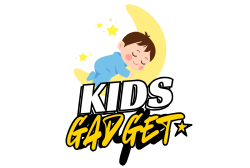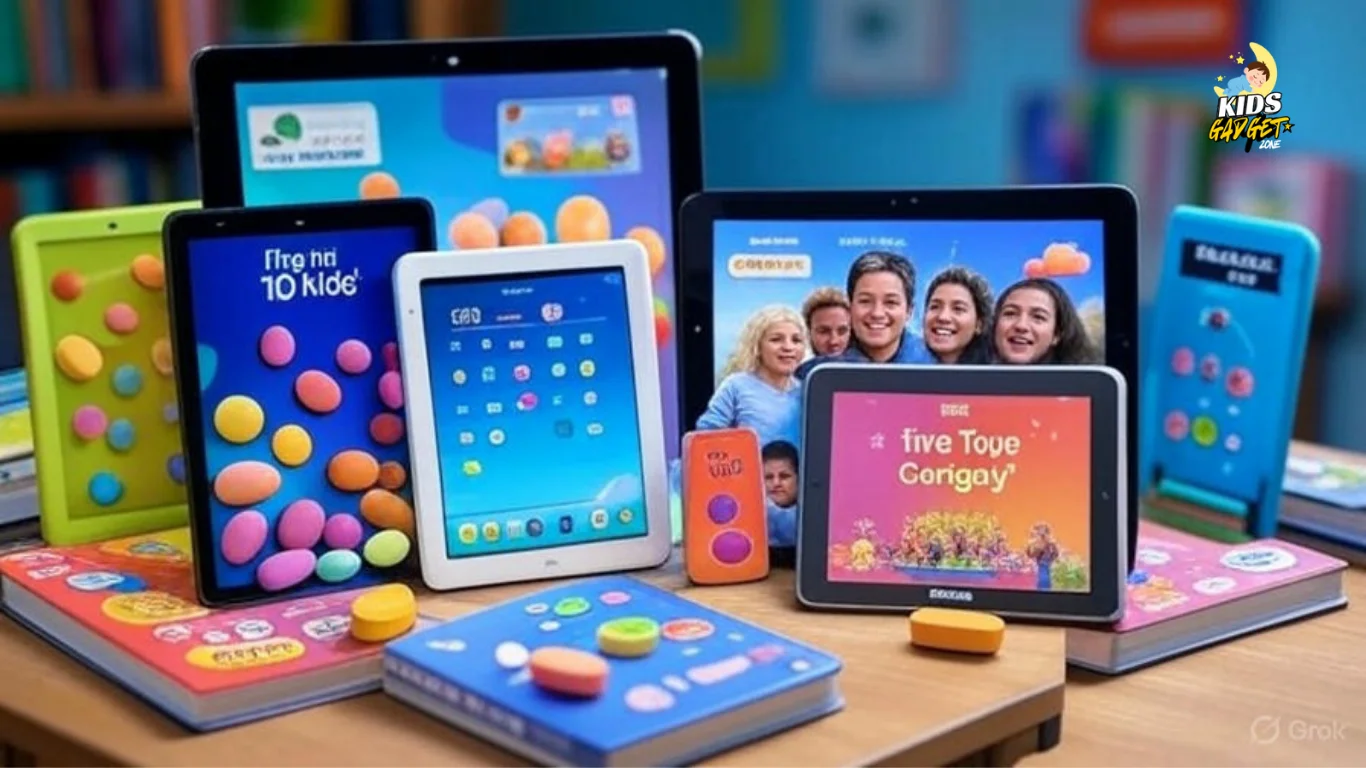Tablets are transforming how children learn by combining education with entertainment. Here’s why they’re an excellent choice:
- Interactive Content: Educational apps and games engage kids in hands-on learning, making complex concepts easier to grasp.
- Portability: Lightweight and compact, tablets are perfect for learning at home, in the car, or on vacation.
- Vast Resources: With internet access and app stores, tablets provide endless educational materials, from e-books to video tutorials.
- Customizable: Parents can tailor content to match their child’s age, interests, and learning goals.
But not every tablet is ideal for kids. The best tablets for kids’ learning need to balance educational value, safety, durability, and ease of use. In this guide, we’ll explore these factors and highlight top options like the Amazon Fire HD 8 Kids, Apple iPad, and LeapFrog LeapPad.
Key Factors to Consider When Choosing a Tablet for Kids
Before diving into specific recommendations, let’s break down the essential features to look for in a kids’ learning tablet:
1. Educational Content
A tablet’s value lies in its ability to deliver quality educational material. Look for:
- Preloaded apps or games focused on subjects like math, reading, or science.
- Access to app stores or subscriptions (e.g., Amazon Kids+, App Store) with a wide range of age-appropriate learning tools.
2. Parental Controls
Safety is paramount. Robust parental controls should allow you to:
- Set screen time limits.
- Filter or block inappropriate content.
- Monitor usage and app activity.
- Restrict purchases.
3. Durability
Kids can be tough on devices, so prioritize tablets with:
- Protective cases or rugged designs.
- Resistance to drops, spills, and rough handling.
- Warranties for added peace of mind.
4. Age-Appropriateness
The tablet should match your child’s developmental stage:
- Younger kids (ages 2-5) need simple interfaces and basic educational content.
- Older kids (ages 6-12) benefit from advanced features like web browsing or creative tools.
5. Screen Size and Battery Life
- Screen Size: Smaller screens (7-8 inches) suit little hands, while larger ones (10+ inches) enhance visibility for videos or games.
- Battery Life: Aim for 8-12 hours to support extended use without frequent recharging.
6. Price
Tablets range from budget-friendly (under $100) to premium (over $300). Consider your budget alongside the features your child needs.
Top Tablets for Kids’ Learning: Reviews and Comparisons
Here’s an in-depth look at the best tablets for kids’ learning, complete with features, pros, cons, and recommendations.
1. Amazon Fire HD 8 Kids
Price: ~$140
Overview: A budget-friendly favorite, the Amazon Fire HD 8 Kids is designed for young learners with durability and educational content in mind.
Features
- 8-inch HD display.
- 32GB storage (expandable to 1TB via microSD).
- Up to 12 hours of battery life.
- Kid-proof case included.
- One-year Amazon Kids+ subscription (thousands of books, apps, and videos).
- Two-year worry-free guarantee.
Pros
- Affordable and feature-packed.
- Durable design with a protective case.
- Excellent parental controls via Amazon Parent Dashboard.
- Vast educational library with Amazon Kids+.
Cons
- Limited to Amazon’s app store (no Google Play).
- Performance lags compared to premium tablets.
Best For
Younger kids (ages 3-7) who need a simple, durable tablet for early learning.
2. Apple iPad (10th Generation)
Price: ~$349
Overview: The iPad is a premium option with unmatched performance and a massive app ecosystem, ideal for older kids or advanced learning.
Features
- 10.9-inch Liquid Retina display.
- 64GB or 256GB storage.
- A14 Bionic chip for fast performance.
- Up to 10 hours of battery life.
- Access to the App Store.
- Screen Time parental controls.
Pros
- Stunning display and smooth performance.
- Thousands of educational apps (e.g., Duolingo, Scratch).
- Long-term software updates.
- Versatile for schoolwork and creativity.
Cons
- Expensive; case not included.
- May overwhelm younger kids with its complexity.
Best For
Older kids (ages 8-12) tackling advanced subjects or creative projects.
3. LeapFrog LeapPad Academy
Price: ~$130
Overview: Built specifically for education, the LeapPad Academy targets young kids with a focus on interactive learning.
Features
- 7-inch shatter-safe screen.
- 16GB storage.
- Up to 9 hours of battery life.
- Preloaded with 20+ educational apps.
- Kid-safe web browser.
Pros
- Tailored for kids’ learning.
- Durable and drop-resistant.
- No extra app purchases needed upfront.
- Simple interface for young users.
Cons
- Smaller screen size.
- Limited app variety compared to mainstream tablets.
Best For
Preschoolers (ages 3-6) starting their educational journey.
4. Samsung Galaxy Tab A8
Price: ~$230
Overview: A versatile Android tablet with a large screen and access to Google Play, balancing learning and entertainment.
Features
- 10.5-inch LCD display.
- 32GB storage (expandable to 1TB).
- Up to 12 hours of battery life.
- Google Play Store access.
- Samsung Kids mode.
Pros
- Big, clear display.
- Wide app selection.
- Good value for the price.
- Expandable storage.
Cons
- Parental controls less robust than Amazon or Apple.
- Case not included.
Best For
Kids of all ages seeking a flexible, all-purpose tablet.
5. Amazon Fire HD 10 Kids Pro
Price: ~$200
Overview: A step up from the Fire HD 8, this tablet offers a larger screen and more features for older kids.
Features
- 10.1-inch Full HD display.
- 32GB storage (expandable to 1TB).
- Up to 12 hours of battery life.
- Slim protective case.
- One-year Amazon Kids+ subscription.
Pros
- Larger, sharper display.
- Advanced features for older kids.
- Strong parental controls.
- Durable yet lightweight.
Cons
- Amazon app store limitation.
- Slightly pricier than the Fire HD 8.
Best For
Kids (ages 6-12) needing a bigger screen and more functionality.
Comparison Table
| Tablet | Screen Size | Storage | Battery Life | Parental Controls | Price | Best For |
|---|---|---|---|---|---|---|
| Amazon Fire HD 8 Kids | 8 inches | 32GB | 12 hours | Excellent | $140 | Ages 3-7 |
| Apple iPad (10th Gen) | 10.9 inches | 64GB/256GB | 10 hours | Excellent | $349 | Ages 8-12 |
| LeapFrog LeapPad Academy | 7 inches | 16GB | 9 hours | Good | $130 | Ages 3-6 |
| Samsung Galaxy Tab A8 | 10.5 inches | 32GB | 12 hours | Good | $230 | All ages |
| Amazon Fire HD 10 Kids Pro | 10.1 inches | 32GB | 12 hours | Excellent | $200 | Ages 6-12 |
Recommendations
- Younger Kids (3-7): Amazon Fire HD 8 Kids or LeapFrog LeapPad Academy.
- Older Kids (8-12): Apple iPad or Amazon Fire HD 10 Kids Pro.
- Versatile Option: Samsung Galaxy Tab A8.
How to Set Up a Tablet for Kids’ Learning
Once you’ve picked a tablet, setting it up properly ensures a safe and educational experience. Follow these steps:
1. Create a Child Profile
- Use built-in options (e.g., Amazon Kids, Apple’s Family Sharing) to create a kid-specific account with restricted access.
2. Configure Parental Controls
- Set time limits, block inappropriate content, and enable usage tracking.
- Examples: Amazon Parent Dashboard, Apple Screen Time, Google Family Link.
3. Install Educational Apps
- Download apps suited to your child’s age and interests (see recommendations below).
- Check reviews to ensure quality and relevance.
4. Establish Screen Time Rules
- Set daily limits (e.g., 1-2 hours) to balance learning with physical activity.
- Use timers or alerts to enforce breaks.
5. Monitor Regularly
- Review usage reports to ensure the tablet supports learning goals, not just entertainment.
Top Educational Apps for Kids
Enhance your child’s tablet with these highly rated apps:
- ABCmouse (Ages 2-8): Full curriculum covering reading, math, and more. Subscription-based.
- Khan Academy Kids (Ages 2-7): Free lessons in math, reading, and social skills.
- Duolingo (Ages 6+): Language learning through gamified lessons.
- ScratchJr (Ages 5-7): Introduces coding with drag-and-drop storytelling.
- PBS Kids Games (Ages 3-8): Fun games tied to educational TV shows.
Choose apps that align with your child’s learning needs—whether it’s foundational skills or advanced topics like coding.
Tips for Parents to Maximize Learning
A tablet is only as good as how it’s used. Here’s how to make the most of it:
- Schedule Learning Time: Dedicate specific hours for educational use (e.g., 30 minutes daily).
- Engage Together: Explore apps with your child to guide and motivate them.
- Mix It Up: Encourage variety—switch between subjects like math, art, and science.
- Limit Entertainment: Prioritize learning apps over games or videos.
- Balance Activities: Pair tablet time with outdoor play, reading, or family interaction.
Conclusion:
Selecting the best tablet for kids’ learning depends on your child’s age, needs, and your budget. The Amazon Fire HD 8 Kids shines for younger learners with its affordability and durability, while the Apple iPad excels for older kids needing power and versatility. The LeapFrog LeapPad Academy is perfect for preschool education, and the Samsung Galaxy Tab A8 offers flexibility for all ages. For a middle ground, the Amazon Fire HD 10 Kids Pro bridges simplicity and advanced features.
By pairing the right tablet with educational apps, strong parental controls, and active involvement, you can unlock a world of learning for your child. Visit Amazon, Apple, or Samsung for more details, and read reviews to finalize your choice. Here’s to making learning fun, safe, and effective!

